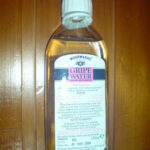If my husband has one gripe with me it’s that I take so much time grocery shopping because I’m forever reading labels. The same is true of me when it comes to dog food labels.
Bailey, our Golden Retriever, is a part of our family. I want to ensure her proper health and nutrition as much as that of any other family member. For that reason I take time to read dog food labels and find out just what we’ll be feeding Bailey with any given brand.
What’s on Every Dog Food Label
All dog food is a mixture of protein, fat, carbohydrates, and fiber. The important thing is the ingredients used to add these nutrients to dog food. That can vary widely. That’s why it is important to get in the habit of reading dog food labels before purchasing dog food.
The dog food label should tell you what type of protein, fat, carbohydrate, and fiber are in the dog food and any vitamins and minerals that have been added to enhance your dog’s health. You will also find there any additional supplements, such as antioxidants or nutritional supplements such as glucosamine and chondroitin.
What to look for on Dog Food Labels: Protein
When comparing labels look for an animal based protein to be the first ingredient on the label. Protein is essential for the development of strong muscles, regulation of antibodies, and transfer of nerve impulses. It is essential.
Proteins are made up of chains of amino acids that are constantly being metabolized by your dog’s body. Some amino acids are made by your dog, these are non-essential amino acids, others must be consumed.
There are ten essential amino acids for dogs. These include: arginine, histidine, isoleucine and leucine, lysine, methionine, phenyalanine, threonine, tryptophan, and valine.
Do not consider a dog food product made primarily of bone or meat by-products to be high in protein. By-products used in the production of dog food include lungs, kidneys, brain, liver, blood, bones, spleen, stomach, and intestines. You may end up spending more in the long run because it will take more cheap food to meet your dog’s nutritional needs.
What to look for on Dog Food Labels: Carbohydrates
Some dog foods are 40% to 50% carbohydrates. Remember, for your dog’s optimal health the number one ingredient should be protein. Too much grain is no substitute for hearty, muscle building protein. Additionally, too many carbohydrates increase digestion time for dogs because, unlike humans, dogs begin digestion in their stomachs.
Watch the carbohydrate content on the label carefully, as too much carbohydrate may leave your dog less energized and create large, frequent mounds of stool.
We have been down this road with Bailey, the Golden, and have seen a significant change for the better in her bowel habits alone.
Cheaper foods are usually higher in carbohydrate. In the long run, however, are you really saving money if you are not feeding your dog for optimal health?
What to look for on Dog Food Labels: Fat
Fat helps supply your dog with the energy they need to be active and play. Fats also supply amino fatty acids essential to your pet’s skin and shiny coat. Most reputable dog food companies provide the correct ratio of fat in their dog food. If you notice your dog is gaining too much weight either make sure he gets more exercise or opt for a “lite” dog food. Do not dramatically decrease your dog’s fat intake. If your dog is gaining weight, consult your veterinarian.
What to look for on Dog Food Labels: Vitamins
Vitamin A is important to your dog’s vision and a healthy immune system.
Vitamin D helps to regulate the absorption of calcium and phosphorus to help mineralize bones.
Vitamin E assists the body in building healthy cell membranes and developing a hearty immune system. Vitamin E is also considered an antioxidant
B Complex Vitamins are a group of vitamins that are not soluble in water and, as such, are not retained in the dog’s body for any long period of time. Small amounts of B vitamins are necessary daily in order for your dog to process proteins, carbohydrates, and fats into energy.
You may have noticed one vitamin missing from this list of common vitamins: Vitamin C. Dog’s produce enough Vitamin C for their nutritional needs and do not require supplementation. In fact, vitamin C supplements can cause health problems including kidney stones, liver and kidney dysfunction, and other problems.
What to Look for on Dog Food Labels: Minerals
Calcium and Phosphorus are important to the development of strong bones. These minerals also aid in metabolism and are important to the nervous system.
Potassium is important in enzyme function, muscle function, and nervous system functions. Potassium must be maintained to help maintain a healthy balance of fluid throughout your dog’s body.
Magnesium provides a catalyst for important reactions in your dog’s body function and metabolism.
Iron is one of the small, but essential, building blocks of hemoglobin. Iron is also important for energy use. Iron cells, along with red blood cells, are constantly being killed and reproduced. This requires that your dog food have an adequate amount of iron.
Zinc is important in protein production and the maintenance of a healthy immune system. It helps strengthen cell walls and is also a catalyst for hundreds of enzymes in your dog’s body.
Copper aids in the transportation of oxygen to the blood and also in energy metabolism. It plays a role in red blood cell development and is essential to certain tissue formation.
Sodium and Chloride help maintain cell homeostasis and also assist in digestion.
Selenium can be toxic to dogs at high levels. It works in conjunction with vitamin E, but such a small amount is required that it is generally added afterward to ensure the appropriate amount is given.
Adequate supplies of Iodine affect your dog’s metabolic rate and thyroid function. Inadequate amounts can lead to hair loss, dull hair, lethargy, and general weakness.
What to Look for on Dog Food Labels: Special Additives
Glucosamine and Chondroitin are additives in dog food for very active dogs and aging dogs. Glucosamine and chondroitin sulfate work together to help build healthy joints. This additive may also be beneficial to dogs who suffer from Rheumatoid Arthritis or stiff joints.
L-Carnitine is often added to dog food for overweight dogs. L-Carnitine is believed to help dogs burn fat more efficiently for energy.
Antioxidants are believed to help slow the aging process and may even help guard against disease by killing free radicals in your pet’s body. Common antioxidants found in dog foods include: alpha lipoic acid, grape seed extract, lutein, lycopene, milk thistle extract, selenium, and additional amounts of vitamins for their antioxidant effect.
Sources:
Dog Food Protein and Its Amino Acids; The Animal Advocate
Dogs and Carbohydrates- Are You Feeding Him Too Many; thedogsbone.com
Necessary Nutrients, Purina.com
What about ‘Fat Free’ Dog Food; longliveyourdog.com
Why Canine Vitamin C Supplements Aren’t Necessary; Vetinfo.com
Why Cheap Dog Food Gets What You Paid For; Vetinfo.com
Will a Canine Supplement Help with Aging?; Vetinfo.com




